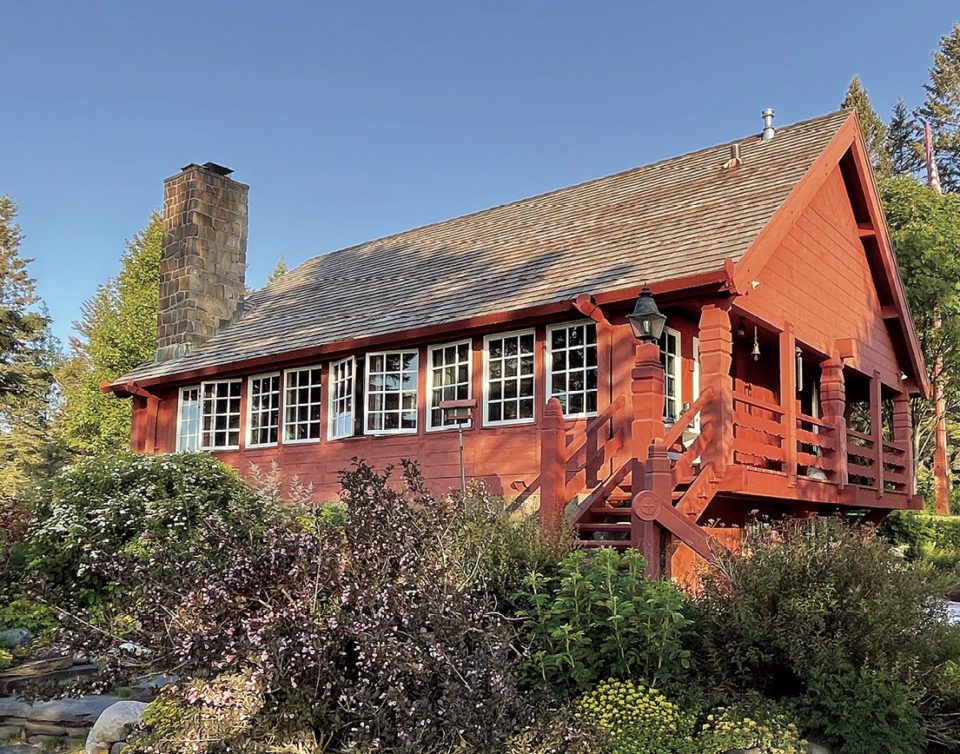The connection to the North Shore is different and personal for everyone who’s lived in or visited this spectacular area. The tall timbers, majestic cliffs and beautiful shorelines are what inspired architect Edwin H. Lundie during his first visit in the 1930s. Lundie, a Saint Paul native, was commissioned to design a vacation cabin for a wealthy railroad executive whose company had an office in Duluth.
Lundie began his design career right after high school as an apprentice designing the Minnesota capital in Saint Paul and was a sought-after professional with a good reputation. Accepting the North Shore assignment brought him a bit out of his element, but he quickly embraced the stunning natural resources and rich Scandinavian history, which eventually became his trademark architectural style throughout the North Shore. He went on to design over a dozen private vacation homes in the area and no two are alike.
The original Lutsen Resort main lodge, built in 1949, is one of his iconic landmarks. The first building burnt down shortly after construction and a new one replaced it within the following year, which also fell victim to a fire. The structure which now stands is reminiscent of his original work, including the large timbers and colors. The Nelson family, immigrates from Sweden, settled on the land in 1889, which became a welcome stopping point for travelers before a road was built. It overlooks a beautiful view of Lake Superior, which Nelson named “Lutsen.” Their modest home at the time became a stop of convenience as fishermen and naturalists made their way up the lake. The lodge, still in operation, is the oldest resort in Minnesota.
Peter O’toole, owner of a Saint Paul Architecture Firm, wrote two books cataloguing the history of Lundie and the impact of his innovative craftsmanship. The first is a full color photo essay titled Edwin H. Lundie: Five Decades—A Journey of the Art & Architecture. The second is a companion piece titled Edwin H. Lundie: The Office of an Architect. O’Toole describes Lundie’s style as “iconic” with the use of Mesaba Red exterior paint, large pine timbers—both inside and out and the overall rustic, natural design. He also notes Lundie studied the property, incorporating the landscape into his design. O’Toole adds, “The result is much like a painting, the way he thoughtfully put the environment into consideration.” He points out that Lundie was inspired by the natural cool temperatures coming off Lake Superior and the designs include many large windows to capitalize on that feature.

All of the Lundie cabins are still vacation homes for private owners, many being direct descendants of the original families who commissioned Lundie. Steven Lukas, who has lived in one since 1999, admires the deep history of the cabins and maintains the original work of the 1950s property. Lukas, along with several other Lundie enthusiasts, organized bus tours along the shore to visit the cabins for 17 years. The tours were a wild success, filling tour busses, spending the day visiting the properties and meeting some of the owners, who were receptive to sharing their little piece of Lundie history. One of Lundie’s largest projects on the tour was the Slade Mansion. This property boasts 12 bedrooms, eight baths with 3 miles of shoreline and 3,000 acres of property. This estate was so carefully designed that not many know it is even part of the community. The group has since retired but feel the interest is still there for other folks to resurrect the tours to preserve this lesser-known story of the area.
Those intrigued by Lundie’s designs can visit the Cross River Heritage Center in Schroeder. A permanent exhibit is dedicated to his work, including some of his trademark timbers framing the space and a window from one of his original cabins. Visitors can also view scale models of each of his North Shore cabins that were a project donated by University of Minnesota students. Dale Mulfiner’s book, The Architecture from Edwin Lundie, is also available on site. The historical information center is operated by the Schroeder Area Historical Society and located on Highway 61. The Heritage Center is open through October 15 and a whole family can enjoy the visit for a $10 admission. More information on the Historical Society and Edwin H. Lundie can be found online at: crossriverheritage.org.






